Mergers, Acquisitions, and Plugin Subscriptions: How Slate Digital Got Sold
Is audio industry consolidation accelerating? With so many M&A activity announcements in the last two years, it would certainly seem so.
In late November of 2021, guitar giant Fender acquired PreSonus. Earlier that year, iZotope and Native Instruments merged, becoming one in the form of a new parent company Soundwide. The Soundwide umbrella is growing and today encompasses Plugin Alliance, Brainworx and Sound Stacks. More recently in late 2022, Focusrite acquired Sonnox – a deal valued at 9.1 million pounds sterling by the media outlet MusicTech.
Looking back, even the mighty Pro Tools DAW has changed hands, with Digidesign being acquired by Avid in 1995. Avid has also acquired audio brands like Bomb Factory, Sibelius, M-Audio, and Euphonix. In November 2016 Samsung acquired HARMAN in an $8 billion deal, absorbing its valuable automotive audio business and well-known gearhead brands including JBL, AKG, and Lexicon. Yamaha bought guitar amp simulator specialists Line 6 in 2013.
Another notable audio acquisition that took place was the October 2022 purchase of Slate Digital by Audiotonix. This is the latest in a series of acquisitions by Audiotonix, which has grown to encompass Allen & Heath, Calrec, DiGiCo, DiGiGrid, Group One Limited, KLANG:technologies, SSL, and Sound Devices.
In 2018, SonicScoop interviewed Audiotonix CEO James Gordon about acquiring SSL from Peter Gabriel, a transaction that took many by surprise. Gordon and his colleagues subsequently saw a lot to like in Slate Digital, which was co-founded in 2008 by Steven Slate and Fabrice Gabriel. In addition to Slate Digital’s dynamic image – easily one of the most charismatic in the audio industry – Audiotonix admired Slate Digital’s excellent execution in subscription audio offerings. That’s a sector that spans both plugins and educational offerings, one part of a lucrative global software subscription/Software as a Service (SaaS) market that was valued at $215.1 billion in 2021, and is projected to grow from the 2022 figure of $251.17 billion to $883.34 billion by 2029.
For this interview, Gordon was joined by new Slate Digital CEO John Bastianelli, whose 30+ year career spans roles as a pro audio industry executive, music producer, songwriter, and musician. Previously, Bastianelli has helmed product management teams for audio brands including PreSonus (Fender), M-Audio (Avid Technology) and Tascam.
The two executives discussed a wide range of topics including recent audio industry trends, how Audiotonix picks an acquisition target, and what led them to Slate Digital specifically. They also shed light on the growing importance of subscription-based plugin models to a company like Audiotonix. There are valuable insights on charting a successful career as an audio developer – plus what’s coming next for Slate Digital’s enthusiastic customer base.
I want to start with an overview in asking you both, how would you characterize the overall audio market today? What are the opportunities when it comes to hardware and software in 2023?
James Gordon: There’s some amazing brands that have owner founders that are either nearing retirement or are looking to get more finance into their company to be able to achieve greater things. From our perspective, we are seeing some great companies and some great opportunities that we think we can work with. We can create synergies between the group in the background and that will help customers get better value, and exploiting the two technologies to give them a better end result.
Right now it’s a pretty exciting time for companies in the industry, but you better be investing a lot of money into R&D. I think more than ever now our customer bases are getting more demanding and more creative, and the more we add, the greater market share we’ll potentially get. But if you step off the gas and stop innovating and stop investing in R&D, you’ll get left behind far quicker today than you would’ve done five years ago.
John Bastianelli: I always use this term and overuse it, but I’m going to use it again: We live in “an ADHD society.” Everyone wants instant gratification, especially our beginner-targeted customers. The appealing part of Audiotonix is that they’re working to satisfy a complete-solution customer base. I know that sounds cliché, but it’s true.
So where’s the industry going? There’s too many solutions, too many things out there. People are confused, they jump aboard and they immediately, after a short period of time, get frustrated. They don’t know where to turn or where to go. We have the ability to take a customer through their journey of teaching them at the very simplistic level with easy tools. As they grow, they can add hardware if they come in through live sound, for instance. It’s obvious what we have already on that side of things through Allen & Heath.
A lot of our customers are new customers, especially the content creators as I like to call them because I don’t call them musicians anymore — it’s content creators, beatmakers, streamers, DJs — all morphed together. When you look at who makes the latest Justin Bieber record and you see 10 songwriters and 10 producers on the record, it’s people that all know a little bit of how to make a record. It’s all about an easy barrier of entry, so that’s where the audio business is going in my mind: easier, better.
I started off by asking you about the opportunities. What are the biggest challenges that the audio industry is facing right now?
John Bastianelli: The challenges — from what I just mentioned before — is that there’s so many solutions, and people don’t know where to turn to. They are confused.
Every second you get an email that basically has eight trillion plugins and for this amount of money, but where do you start? Where’s the solution there? I think the market is really, really confusing. It’s the same as sitting down and trying to watch a movie: It’s Netflix, Amazon, Hulu, what do you do? Where do you start? That’s the biggest problem. I’m interested in solving that in particular, and I think we all are.
James Gordon: I think it used to be easy to get into our industry. You could do it in a garage, you could write some software at home, but now the cost of entry’s got much harder.
We spend a lot of time trying to nurture smaller companies as well. KLANG for us was a great example of that: It was a five- or seven-guy operation when we got involved with them, and we tried to help them grow their distribution network, and then ultimately they came on board as part of the group. It’s spotting where the talent is and seeing if we can try and help it.
And we’ve had challenges the last 12 months with components, finding parts has been a challenge and they’re manufacturing challenges. For us as a group, it’s definitely been easier for each of the brands in that they’ve been able to cooperate and work together to secure those parts, as opposed to working as smaller brands.
Audio Acquisition Action
It feels like we’re seeing a rapidly accelerating consolidation in the audio industry. Recent examples are the recent acquisition of Sonnox by Focusrite, Plugin Alliance was acquired by Soundwide and PreSonus by Fender as well before that. Why is this action accelerating? Where do acquisitions fit in the big picture?
James Gordon: I think it has gone in waves, brands like Harman and Loud have done acquisitions in the past and the team at Fender have too.
There are moments where acquisitions in our industry do become more common. We started doing them back in 2014 and we’ve pretty much done one per annum. I don’t think we need to do more than that. If we did too many more than that, we’d overstretch ourselves in terms of getting the integration right.
Definitely our industry has a lot of more founder-owned businesses that the founders are looking either to retire or realize some value from their hard work. That’s certainly true in a number of the examples you just gave there. And I think that means that if they find the right partner to take on their firstborn, if you like, then it allows those companies to go on and have a stronger future.
As more private equity comes in and sees that there is a potential to make money in our industry, if it’s done the right way, they will come in and invest. Our industry is particularly recession-proof as well. It tends to be that both on the live performance and also on the home creation side, people love music. It’s a big part of our culture and our lifestyle.
But generally I just think in the audio industry it’s much more expensive to build products now than it used to be. It’s much harder to get started and scale definitely helps with that. And we’re a generation that is handing, I guess, the first-generation mantle over to the second generation. Those founders are getting into their early and late sixties. It’s time for them to look to realize their value and maybe get a little bit more time with their family, because we don’t seem to get a lot of that in this industry.
Selecting a Software Company: Finding the Fit
Audiotonix’ previous acquisitions all seem to have been focused on hardware. Although Slate does have a hardware offering with the Virtual Microphone System (VMS), when did software/plugins get on your radar and what criteria did you apply in general to an acquisition target?
James Gordon: No. You’re not wrong if you look from the outside, you would think that we’re a hardware business, but we are really a technology business and 70% of our R&D team prior to Slate were software, because most of our products are digital and they have some form of user interface or networking or digital audio. So a huge amount of our team were already software.
And most of the brands, certainly DiGiCo and Allen & Heath historically were selling software upgrades or expansion to their different products. And obviously SSL had their native range of plugins running in the background for a while. And one of the reasons when we acquired SSL was that we could see they had these, again, very good plugins, but they weren’t actually investing any R&D bandwidth into upgrading them or adding more to the portfolio.
It wasn’t the first thing we did, but probably three years ago, we started to regularly expand the software offering from SSL. And that actually is why the investment banker that was working with Slate Digital thought we were a perfect fit because the guys wanted to make sure they retained their Slate Digital identity, but also wanted to work with a company that understood the challenges of doing perpetual and subscription sales and software.
So it’s not a recent sudden decision, it just fits in with the direction we’re going. I think plugins have grown their importance also in the live arena, and not many of the plugin companies have had access to the live arena. With the brands that we have, we should be able to expedite that when the time’s right, too. So whenever we buy a business, we always look at what we can add to it, but it’s also got to contribute back to the group. And Slate Digital absolutely ticks both those boxes.
How long did it take the transaction to unfold? And what were the obstacles that had to be overcome for it to happen?
James Gordon: I think when you’ve got two people that are very passionate about the business they’ve created, there’s always a worry that the person acquiring it understands it and is going to do the right things and is going to look after the teams.
(Slate Digital had) two very different founders in terms of value as well. Steven is very customer focused and on the user/creative side of things, and Fabrice was very much on the quality of the algorithm and making sure that that audio quality was maintained. I went to France several times prior to meet the teams. He wanted to make sure that the team in France were aware it was going to happen and who the acquirer was. So ordinarily we wouldn’t meet any of the staff. We might meet some of the senior managers, but not the general staff. And in this particular situation, I met all of the people that work there.
It meant being a lot more people-focused, which actually I think played in our favor because some of the other companies that were looking at it perhaps don’t have the same love or passion for the creators of the products. That played in our favor, but we had to do a lot more of that interaction. Whereas with SSL, it was about convincing Peter (Gabriel) that we were going to look after his brand and do the right things, (Slate Digital) was as much about making sure the R&D team were going to be looked after, as making sure the customer base was valued.
Slate Digital is a company with Steven’s name on it. He’s definitely a distinctive force in the industry. Have you gotten any feedback on him no longer actually being a part of the company? How has that changed the equation in the eyes of the users?
James Gordon: On the first day most of the reaction on social media from the user base, the subscribers, was a view of excitement because they’d seen what had happened with some of the other brands. Our industry’s pretty small. Obviously there was a lot of excitement about the fact that SSL was residing in the same group as Slate Digital, which I think is exciting for the future too. We viewed that as a positive as well.
And I think what really reinforced the position was what happened on Black Friday (of 2022), because we launched our FG-X 2, a new dynamics/mastering plugin that they’ve been trying to get out for a long time. We really put a lot of effort into making sure that came out for Black Friday.
We also did the Neumann U 87 emulations for the VMS ML-1 hardware. They hadn’t put a lot of effort or focus into doing new emulations, and that was one that we thought was obvious. Doing the U 87 Classic pack was a big deal for us, and we also pulled out a few other little toys like FG-X 36A, an emulation of the legendary exciter from the 1960’s. When Slate Digital customers saw that they got all that extra value in their subscription, a lot of confidence was put back into the brand that it wasn’t going to stop.
Also the fact that the price hasn’t gone up — that was the other thing that everyone was worried about was that we were instantly going to put $5 on the price, and that’s clearly not the intention.
When those two things were proven, there’s a lot more excitement into where the brand can go and what else it can offer.
Were all Slate Digital employees retained, or were there any layoffs?
James Gordon: We haven’t really laid anyone off per se. We have lost some of the people that wanted to do different things and we’ve gained some too, actually, same as you have in any business.
And we are currently investing too: We’re looking for some new team members for both France and LA. We’re looking for some product team people, some SaaS marketing people. So we’re investing quite a lot into it at the minute, but frankly, that’s what you end up doing. Whenever you acquire a business, there are people that see the opportunity and there are people that don’t like any form of change and are worried about that going forward.
Software Subscriptions: A Sound Business
John, what were you doing prior to joining Slate and what made this an attractive post for you?
John Bastianelli: I came from PreSonus where I ran product development and was part of the acquisition strategy team to Fender. That was the reason why I joined PreSonus in the first place and moved to Baton Rouge, was to take the company to an acquisition or an event. And it didn’t take two to three years, it took 13 years, but it did pay off and a great bunch of people were involved.
However, Fender was not a place where I was that interested in continuing to work. Nothing against them, they are a wonderful company and a lot of people stayed on, it’s all good and I hope they do wonderful things. But at that point I reached out to James and I said, “Hey, just letting you know the deal happened. I’m looking for something interesting to do.” I parted ways with Fender on great terms and started with Audiotonix and Slate Digital.
You’ve got a lot of experience in the business. Do you have a roadmap of what your role is going to look like as CEO for the first year? What do you expect to be handling?
I come from a product background. The first thing that we all attacked and I addressed was to solidify and harden a roadmap for 2023, and then create what I call a “rolling roadmap” for the future years. Getting that aligned accomplishes a lot. It unites the teams in LA and in Grenoble, it manages expectations, and it improves morale exponentially.
We’ve been talking about subscriptions, James mentioned it, now we’re talking about viewing these plugins as software as a service. Why is the audio plugin industry moving so strongly in this direction?
James Gordon: If you want to buy every plugin you want to buy, it’s an expensive thing to do. Part of having a subscription plan is that you get new toys, new tools to create with on a regular basis.
One of the things Slate Digital I think does incredibly well is their Academy. It’s going to get some upgrades and some new investment into it because it’s all behind the paywall at the moment, which is not necessarily where I think it should be, but actually it’s a great way of bringing younger people in and showing them how to use the plugins that are being offered.
I think it’s true of everything. We are all getting much more used to paying a smaller amount of money on a regular basis rather than buying something today and then having to buy the newer version of it in two years because it’s been upgraded. It’s a more cost-effective way for a user to get what they want. But it also means as a manufacturer, we’ve got to continue to innovate because if we just stand still with what we’ve got, our subscribers will go elsewhere.
I think in the market, there are people that don’t like the word “subscription” because they think it’s manufacturers trying to grab money. But actually as developers, we have software guys to pay for. So rather than creating new products and innovating that way, the software subscription model allows our customers to get new products regularly all within the one cost rather than every year us launching something new that they then have to upgrade to. I think it’s win-win, actually — it’s just perception hasn’t quite caught up with that yet.
The masters of getting it right actually were Slate Digital because they offered a very low-cost entry in, but offered around that some incredibly cool high tech products and have continued to do that on a regular basis. That’s why Slate was attractive to us, because they clearly are the masters of getting the subscription right. We’ve been doing it with SSL and it’s been going well. If customers can have access to the products they need and we can continue to innovate, then it’s good for the customers and it’s good for us as a manufacturer.
John Bastianelli: It was appealing for me as well from the outside, looking at how successfully Slate Digital built a subscription model and not deviating from it. There was no waffling around between doing subscription and then suddenly offering perpetual licenses on specials and going back and forth. That really confuses customers. They’ve done a good job thus far in building a really great plug-in subscription business. I’m looking forward to seeing that grow and we have strategies in place to make that happen.
Corporate Synergies, and Building the Perfect Dev
Now that Slate Digital is under the Audiotonix umbrella, what are the new possibilities for Slate? What will Slate Digital be capable of doing now that it couldn’t on its own?
James Gordon: For the (Audiotonix) group, there’s benefit in terms of we have a lot more subscription knowledge than we had prior — we have a lot more awareness we got from Slate Digital. Slate Digital wins by being part of a group now with about 250 software engineers and DSP developers. We have a lot of experience within the group on how to manufacture, how to do hardware, how to do software, and I’m pretty sure that we are very proactive at companies within the group chatting to each other about products and innovation.
Can you speak more to the new synergies that are available to Audiotonix? What particular brands might start to be affected first from having access to Slate Digital?
James Gordon: Slate Digital actually ticks a lot of boxes for us with that. There’s the obvious: we have two subscription platforms, one with SSL and one with Slate, and there’s some wins we can get there in how we go to market and how that’s generated and the customers we talk to.
There’s also a lot of plugin companies that don’t have access to the live arena. They’re not selling into live sound. Clearly both Slate Digital and SSL have an opportunity in that space, we have some great brands in that space that would be able to accelerate that into the market.
That’s a longer roadmap plan. It’s not an overnight thing to do, but it’s definitely within our ability now to deliver an impressive plugin suite that could do that. I think they’ve always had aspirations to offer their users at Slate more hardware as well, and that’s a possibility of how we do that. It’s always hard for DSP plugin companies to talk to hardware companies with pedigree and history. That now is an easy conversation for the Slate Digital guys with the companies we currently have in the group.
Since we’re talking a lot about the developers and their skills, what characterizes a quality audio software developer? What are the skills and talents that you’re looking for?
James Gordon: It depends on what they’re writing, whether it’s software or algorithms. But in reality, the one thing they need to have is a passion for music. Whatever skillset they do, whether it’s writing code or working on DSP, they have to have a passion for music.
If they don’t, they won’t understand it, they won’t get the benefit from it. And probably they’ll earn more money doing something else, to be honest. It’s true of most of the people that work in all of our companies: They have to love music and they have to either want to create it or listen to it, or it plays a significant part in their lives.
John Bastianelli: And if they didn’t come from it, they get bitten by the bug. It’s really amazing to see it too, because I know so many people that enter the market, and I’ve seen finance people that have no idea about what the business is, and then they just get consumed by it and then they can never leave. It’s just amazing.
James Gordon: I’m always shocked how many finance people either play guitar or DJ over the weekend. There are a prolific number of DJs that do accounts work.
What’s Next for Slate Digital
You’ve mentioned the feedback that you’ve gotten from Slate Digital users, but let me come out and ask what changes can Slate Digital users expect next? How might their experience and interactions with the brand change in terms of product development, service, and support?
John Bastianelli: First of all, they’re going to have more regular releases in the All Access Pass that will be available, some as perpetual licenses — they’re going to be happy about that. There’s more engagement with the customers through the Slate Academy and us being more engaging with customers in general.
Historically, I think Steven had done a great job at being the face of the company and people had this one-way communication with him, but it’s hard for him to actually embrace every single thing. So (following the acquisition) it’s about engaging with the customers, solutions for the customers, regular releases for the All Access Pass, listening to some of their feedback and bringing some of those suggestions to life.
That’s really our major goal without what I like to call “20,000 pounds in a one-pound bag” — that’s not what our strategy is. We want to make sure that we have regular releases, but not overwhelm the market with a ton of things that basically says, “Oh, now you have more value,” even though half of the things you can’t really use. It’s building a strategy around regular releases and what customers are asking for, and helping them along the journey of becoming better content creators.
Here’s my last question: James, you may recall, I asked you this question five years ago when Audiotonix acquired SSL, and I think it is just as important to ask today: From the 10,000-foot view, how does a development such as this latest acquisition of Slate Digital affect music and sound?
James Gordon: Hopefully it means we can make better products. It’s about making products that people want to use. And there is still nothing better for me – and I know it’s true of all of our staff actually – of seeing a clip of a studio on television and it’s got one of our bits of kit in the studio, or you walk into a live show and there’s one of our mixing consoles. Whatever it is, there’s nothing better than seeing the products we’ve spent ages making, being used and creating. With the advent of social media, you get to see an awful lot more as people post up what they’re doing in their personal studios.
I would love our company to make products to make a difference, and people use them and make better quality music that they want to make. It doesn’t have to be music I want to listen to, just has to be something that people enjoy. And whether that’s on their own TikTok video at home, or whether it’s a platinum selling album, it’s just great to be involved. I don’t know how many years I’ve been in this industry now, it’s a very long time, but I’ve never “gone to work.” It’s great to get up every morning and work with exciting people that challenge you quite a lot, but you make cool products and see them being used.
We just want to add brands — as it was five years ago — high quality brands that we can help and they can help us. They keep their identity as a brand, they grow, they get to do the cool products they want to do. All the stuff that SSL’s put out, they’re all ideas that came out of Oxford, but a lot of them they would never have been able to do if we hadn’t been there to leverage our scale or help them do new things. And that’s true of Slate: It’s great to allow people to do what they want to do quicker.
— David Weiss is an Editor for SonicScoop.com, and has been covering pro audio developments for over 25 years. He is also the co-author of the music industry’s leading textbook on synch licensing, “Music Supervision, 2nd Edition: The Complete Guide to Selecting Music for Movies, TV, Games & New Media.” Email: david@sonicscoop.com
Please note: When you buy products through links on this page, we may earn an affiliate commission.







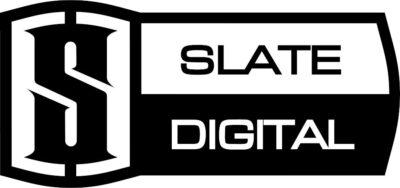
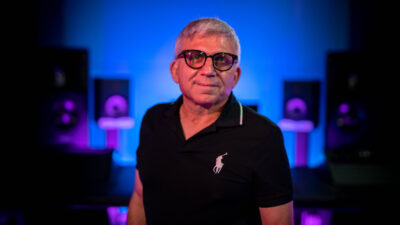
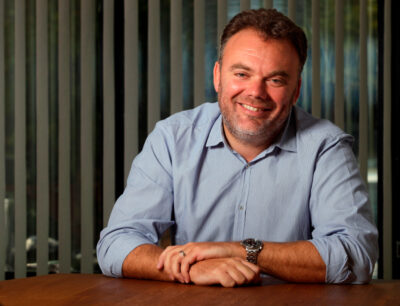
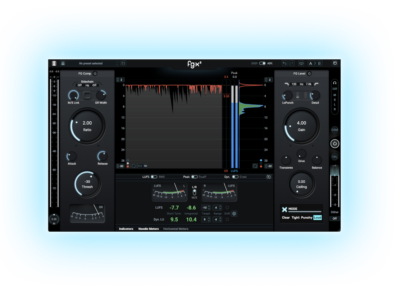
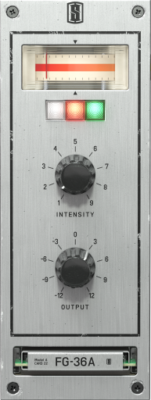

[…] Source link […]